Koyasan Choishimichi
|
|
Koyasan Stone Marker Path
The
Koyasan Stone Marker Path starts from Jison-in in Kudoyama and ends at the
mausoleum of Kobo Daishi in the Oku-no-in of Koyasan. The distance between two
stone markers is around 109 meters. From Jison-in to the Garan on Koyasan there
are 180 stone markers and from the Garan to the mausoleum in the Oku-no-in 36
stone markers, a distance of around 24 km and additionally there are 4
“riseki”, each of which is placed every 36 stone markers(1 Ri = 36 cho).
Here is the plan of the “Koyasan Choishimichi” Walk of the period Heisei (1989…) |
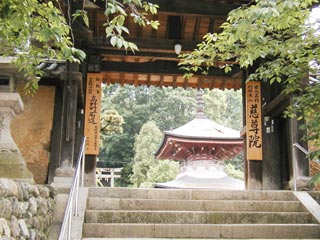 |
| Entrance gate of Jison-in | |
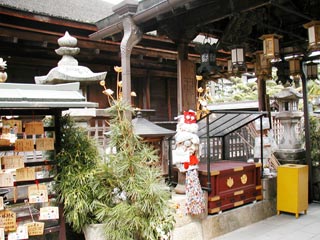
In the centre of the photo, imitation breasts
made of glossy silk as offerings from women wishing to be pregnant, to give
easy birth or hoping for good health |
|
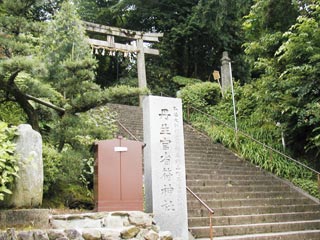 |
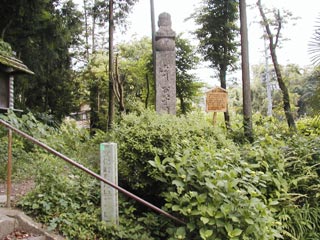 |
|
Stairs leading to Niu Shrine designated by the
government and the stone marker 180 on the right side |
Stone marker 180, the first step of the Koyasan pilgrim path |
|
For 700
years after the completion only a number of 50 Koyasan stone markers had to be
replaced. Even in longtime of snow storms the other stones remain standing as
in those days. In Showa 52 (1981) July, the pilgrim path was appointed as a
national historical site. From Heisei 6 (1995) for a duration of five years the
operation of the Koyasan Stone Marker Preservation successively executed restoration works. The works started
with the dismantling of the two gates called the “Futatsu Torii” and seven
stonemarkers were restored for preservation, followed by works on the summer
house, reconstruction of the path, installation of guideposts and illustrated
map boards, changing in this way the scenery of the
path. Since the “Great Heisei
Restoration” hikers have been sensibly
increasing in number. Much appreciated by the hikers is the four season
landscape of Katsuragi town. From the “Futatsu Torii” you can enjoy the splendid
panorama of Amano village. *Six
stone markers show on their surface a Siddham letter together with four
ideograms meaning either “chief mourner of the ten directions” or “donor of the
ten directions”. The Koyasan stone markers had been heartfully donated by
abdicated emperors, celebrated samurais, ladies and high leveled Buddhist
priests as well as monks and peoble without rank and name. Men and women of
high and low rank equally participated for the realization of this pilgrim
path. |
|
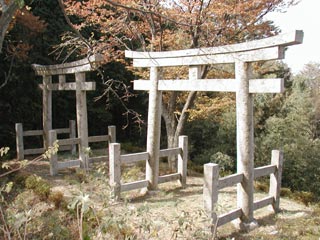 |
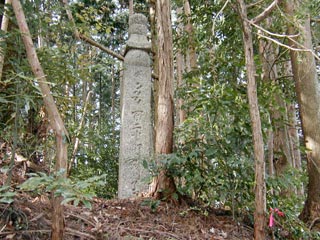 |
| “Futatsu Torii” |
|
| |
|